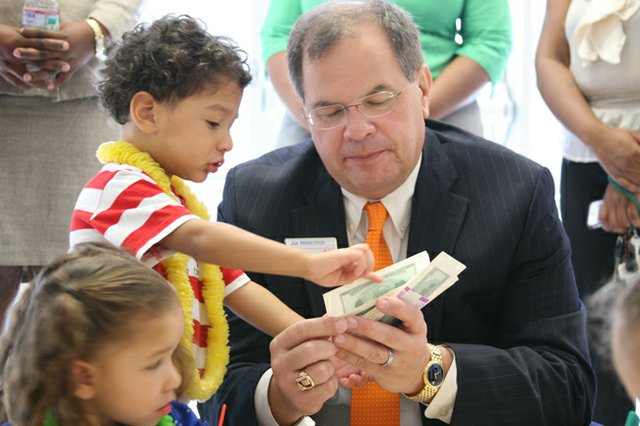Banks, and other financial services companies, may be allowed into UK schools to help teach personal finance, under proposals put forward by MPs, the FT reported recently. Moreover, they would be allowed to use branded material in the classroom.
Predictably, given the prevailing view about banks and bankers as public enemy number one, most of the online comments on the story are sceptical about the ability of bankers to deliver any lessons of value. What are they qualified to teach, given the parade of dubious products and services they have persuaded customers to buy, and their abject failure to run their own businesses soundly?
Their first lesson must be on what money is and where it comes from. There is some disagreement about both: some say money is simply an enforceable promise to pay, and governments created money by requiring citizens to pay taxes in coin. Others say it derives from barter, and money can be anything accepted in exchange for goods or services, including shells, cigarettes, etc. The Economist last year carried an interesting discussion on the origins of money and the possible implications of one particular theory for the dollar and the euro.Banks and bankers need to address their own educational needs before they are let anywhere near schoolchildren.
The question of who, or what, creates money today is the subject of even more debate. Is it the government, central banks or private banks? The average man or woman in the street would probably, and wrongly, name the first, although recent widespread use of quantitative easing may have raised awareness of central bank powers in this respect. Few would venture the opinion that most money in circulation is created by private banks when they make loans, but this view is gaining currency, although it remains controversial.
Banks may not be keen for customers to understand that they can create money out of nothing and then charge for it, if that is indeed what they do. They prefer to be seen as intermediaries, lending out money deposited with them and profiting from the difference between interest charged to borrowers and interest paid to depositors. This is how their activities are typically described.
Martin Wolf of the Financial Times has pointed to the ability of banks to create money a number of times.
A recent paper by Claudio Borio, an economist at the Bank for International Settlements, arguing the case for reinstating finance at the heart of economics, says: “ ... the banking system does not simply transfer real resources, more or less efficiently, from one sector to another; it generates (nominal) purchasing power. Deposits are not endowments that predate loan formation; it is loans that create deposits.”
Mr Borio says it is essential that the role of the financial cycle should be properly understood and modelled, for “a better understanding of the economy and the design of policy”. Ignoring finance in macroeconomics is “like Hamlet without the prince”, he maintains.
If banks create money by lending, is there any limit to how much money they can create? The general view is that the fractional reserve banking system is an effective limit, as it requires banks to keep a reserve, typically 10 per cent of deposits, allowing them to lend out £90 of each £100 on deposit.
However, some dispute this. Marshall Auerback, a research associate at the Levy Institute, said in a blog posted in October: “Bank loans create deposits and are made without reference to the reserve positions of the banks. The bank then ensures its reserve positions are legally compliant as a separate process knowing that it can always get the reserves from the central bank.”
Similarly, in its book Where does money come from? the New Economics Foundation says banks’ lending is “only very weakly linked to the amount of reserves they hold at the central bank”. In a foreword to the book, Charles Goodhart, a professor at the London School of Economics, says central banks do not control the money supply. Instead, it is mainly a function of the demand by borrowers to take out bank loans.
“Moreover, when such demand is low, because the economy is weak and hence interest rates are also driven down to zero, the relationship between available bank reserves (deposits at the central bank) and commercial bank lending/deposits can break down entirely.”
Such a view clearly has implications for the success or otherwise of quantitative easing programmes, to the extent that they are designed to increase bank lending or the money in circulation, rather than buffer bank balance sheets or raise asset prices.
There are fierce differences of opinion among economists over the question of how money is created and how banks operate. It is odd that such questions even arise. It suggests bankers are either unaware of how the institutions they run really work, or are just not telling. Either way, how can they be let loose in classrooms?
Link: http://www.ft.com/cms/s/0/29fe03a0-5f41-11e2-be51-00144feab49a.html#axzz3LUHHynNV


No comments:
Post a Comment